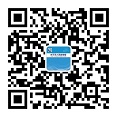Magnetic Anomaly Characteristics Analysis of Multi-Ship Wake and Simulation System Design
-
摘要: 为研究多艘舰船同时航行时尾流磁异常特性, 基于舰船尾流基本理论知识研究了舰船尾流的波形、速度以及感应磁场的分布, 得到了多船尾流感应磁场的变化特性和分布规律。以3艘舰船编队为例, 分析了舰船在运动过程中感应磁场分布及在 x、y方向上的磁场分布情况, 求解了3艘船同时航行时形成的尾流感应磁场分布特性, 并对各种舰船组合航行时产生的感应磁场异常情况进行分析。仿真所得实验结果符合现有测量结果。利用APP Design工具对多舰船尾迹磁异常特性进行仿真系统软件的开发, 该系统不仅能够准确、直观、快速地模拟设定3艘船型尾流在任意方向的磁感应强度大小和变化规律, 而且具有操作简便、节省成本的优势, 为舰船尾流实验提供了理论参考和更为有效的仿真平台。Abstract: In order to study the characteristics of the wake magnetic anomaly when multiple ships are sailing at the same time, based on the basic theoretical knowledge of ship wake, the waveform, velocity, and distribution of the induced magnetic field of the ship wake were studied, and the variation characteristics and distribution patterns of the induced magnetic field of the multi-ship wake were obtained. By taking the formation of three ships as an example, the distribution of the induced magnetic field and the distribution of the magnetic field in the directions of x and y during the movement of the ships were analyzed. The magnetic field distribution characteristics of the wake formed when the three ships sail at the same time were solved, and the abnormal induced magnetic field generated during various ship combination operations was analyzed. The experimental results obtained from the simulation were consistent with the existing measurement results. APP Design tools were used for magnetic anomaly simulation system software development of multi-ship wake. The system not only could accurately, intuitively, and quickly simulate and set the magnetic induction intensity and variation patterns of the wake of three ships in any direction but also had the advantages of simple operation and cost saving, which provided a theoretical reference and a more effective simulation platform for ship wake experiment.
-
Key words:
- ship wake /
- induced magnetic field /
- simulation systems /
- software development
-
表 1 3种船型参数对比
Table 1. Parameters of three types of ship
船型 舰长/m 舰宽/m 吃水深度/m A 33.7 7.7 1.8 B 17.3 6.8 1.2 C 20.5 8.0 1.5 表 2 船A尾流磁场计算结果
Table 2. Calculation results of wake magnetic field of ship A
坐标 磁场强度/nT 异常情况 (0, 0) 10.08 无 (200, 200) 5.17 无 (300, 300) 4.88 无 (400, 400) 4.43 无 (500, 500) 4.02 无 (700, 700) 3.94 无 表 3 船A与B并行时尾流磁场计算结果
Table 3. The calculation results of the wake magnetic field when ship A and ship B are in parallel
坐标 并行时的
磁场强度/nT船A磁场
强度/nT异常情况 (0, 0) 10.08 10.08 无 (200, 200) 5.17 5.17 无 (300, 300) 8.28 4.88 偏大 (400, 400) −2.11 4.43 偏小 (500, 500) 6.35 4.02 偏大 (700, 700) 2.06 3.94 偏小 表 4 船A、B和C并行时尾流磁场计算结果
Table 4. The calculation results of wake magnetic field in parallel with ship A, B and C
坐标 并行时的
磁场强度/nT船A磁场
强度/nT异常情况 (100, 100) 8.33 5.17 偏大 (200, 200) 7.52 4.88 偏大 (300, 300) −2.43 4.43 偏小 (500, 500) 6.36 4.02 偏大 (700, 700) 1.77 3.94 偏小 表 5 舰船反向行驶时尾流感应磁场部分计算结果
Table 5. Calculation result of wake-induced magnetic field during reverse sailing
坐标 船B磁感
应强度/nT船C磁感
应强度/ nT两船反向航行
时磁感应
强度/nT异常情况
(以船B为参照)(0, 0) 6.12 1.37 4.75 偏小 (300, 300) 4.43 2.76 1.67 偏小 (350, 350) 4.12 3.63 7.75 偏大 (400, 400) −4.06 −4.12 −8.18 偏小 (450, 450) 4.05 4.08 −0.03 偏小 (500, 500) 3.96 3.93 7.89 偏大 (700, 700) 1.77 2.78 1.77 无 -
[1] 高江, 张静远, 杨力. 舰船气泡尾流特性研究现状[J]. 舰船科学技术, 2008, 32(4): 27-32.GAO J, ZHANG J Y, YANG L. Research status of ship bubble wake characteristics[J]. Ship Science and Technology, 2008, 32(4): 27-32. [2] VON A W S. An electromagnetic method for measuring the velocities of ocean currents from a ship under way[J]. Journal of Wave Motion, 1950, 11(3): 58-62. [3] LARSEN J C. Electric and magnetic fields induced by deep sea tides[J]. Geophysical Journal International, 1968, 16(1): 47-70. doi: 10.1111/j.1365-246X.1968.tb07135.x [4] YAAKOBI O, ZILMAN G, MILOH T. Detection of the electromagnetic field induced by the wake of a ship moving in a moderate sea state of finite depth[J]. Journal of Engineering Mathematics, 2011, 70(1-3): 17-27. doi: 10.1007/s10665-010-9410-z [5] RODIN A, SOOMERE T, PARNELL K E, et al. Numerical simulation of the propagation of ship-induced riemann waves of depression into the venice lagoon[J]. Proceedings of the Estonian Academy of Sciences, 2015, 64(1): 22. doi: 10.3176/proc.2015.1.04 [6] 张建生. 尾流的光学特性研究与测量[D]. 西安: 中国科学院光学精密仪器研究所, 2001. [7] 肖晨. 船舶尾流气泡幕电磁特性研究[D]. 西安: 西安工业大学, 2016. [8] 张成基, 张建生. 船舶尾流感应磁场特性分析[J]. 兰州工业学院学报, 2019, 26(3): 50-55.ZHANG C J, ZHANG J S. Characteristics analysis of ship wake induced magnetic field[J]. Journal of Lanzhou University of Technology, 2019, 26(3): 50-55. [9] 任斌斌. 南海水面航行体尾流的电磁特性[D]. 西安: 西安工业大学, 2022. [10] 梁玉, 郭立新. 气泡/泡沫覆盖粗糙海面电磁散射的修正双尺度法研究[J]. 物理学报, 2009, 58(9): 6158-6166.LIANG Y, GUO L X. Modified two-scale method for electromagnetic scattering from bubble/foam-covered rough sea surface[J]. Journal of Physics, 2009, 58(9): 6158-6166. [11] 孙荣庆. 海面舰船尾迹电磁散射研究[D]. 西安: 西安电子科技大学, 2013. [12] 熊姗姗. 海洋背景下开尔文尾迹电磁散射与红外辐射特性研究[D]. 西安: 西安电子科技大学, 2014. [13] 王伟. 海面舰船尾迹仿真与电磁计算[D]. 西安: 西安电子科技大学, 2015. -





 下载:
下载:












